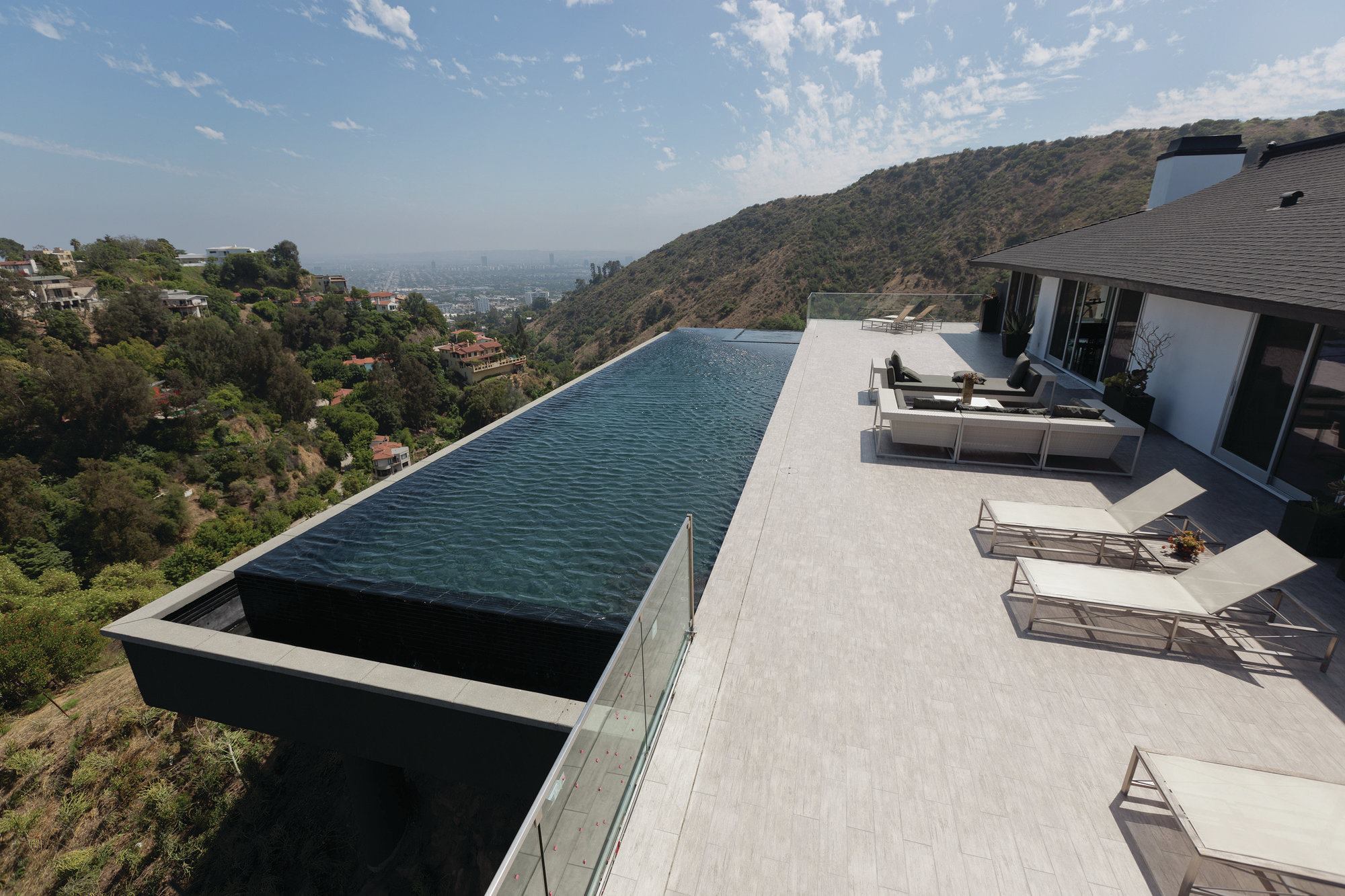For the past few years, the numbers of new residential pool digs has been watched even more closely than in the past.
Renovation, repair, service and the commercial market have been worthy lifeboats for most pool contractors during the recession, but strong growth in new builds would show that things are definitively back on the upswing.
In the western part of the U.S., the news has been mostly good. Builders in Las Vegas — one of the areas hardest hit and slowest to recover — are finally feeling a definite surge in activity. Another devastated market, Phoenix, has picked up but is seeing the year slow down. However, California remains somewhat tentative.
Las Vegas: New birth
Las Vegas has been one of the most stubborn holdouts of the recovery.
While Phoenix and Florida were back on an upswing, the casino capital couldn’t seem to make substantial moves. Permits remained on the decline until 2013, at which point they were virtually flat with the year before, going from 691 to 708, according to numbers provided by Metrostudy, a data division of Hanley Wood, which also owns PSN.
But builders say the city has found life again.
“This is probably going to be the best year in the [Las Vegas] pool business since 2008,” says Stephen Treese, president of Blue Haven National Management in San Diego. “That’s not saying much, though, because we were doing 6,000 pools per year in the valley in 2007, and we’ll maybe do 1,100 or 1,200 this year.”
Year over year, he expects his organization to see an increase of approximately 17 percent in southern Nevada.
Others have high hopes as well. “It’s picking up,” says Scott Burton, president of Prestige Pools. “It’s not back to where it was, but people are building pools, people are buying homes. A lot of the big builders are back building houses. The market is moving.”
The two driving engines for that pool market, new-home construction and casino hiring, have resurfaced. With most of the foreclosed homes purchased, demand is finally beginning to outstrip supply there, so large builders have moved back into town.
“Just driving around, you can see the different signs going up for different communities,” says Joe Vassallo, president of Paragon Pools. “You can see the framing of the houses popping up all over. Even on the signs, the price values are starting to creep up a bit.”
This also means prices of existing homes have begun to rise again, leaving consumers to feel more confident as their own equity draws upward.
Plus there’s a general feeling of revitalization. New construction is taking place on the Strip, and established properties are renovating. Online retailer Zappos has relocated there.
“I don’t know if that’s going to help me, [as a pool builder] because that’s kind of an urban-style living,” says Dustin Watters, vice president of Watters Aquatech Pools and Spas, in Las Vegas. “But bringing that new architecture and new art-based feel to the town kind of spreads. People see new and fresh and want to be part of it.”
Regional and local home builders visibly began purchasing parcels about a year ago, taking advantage of lower land prices and foreclosed properties, Watters says. “They’re finally breaking ground on some of those new homes. [And they] want to put in some swimming pools, which had been unheard of for six or seven years.”
Local pool contractors have positioned themselves to work with these home builders, however, many developers are changing their models, Watters says. In the past, a pool builder would interact with the home contractor. Now, the pool contractors are being asked to deal directly with the homeowner.
“The home builder was in certain cases putting the pool into the whole package,” Watters says. “Now the home builder is focused on the house.”
This growth is partially being made possible by availability of financing in the area.
“I’ve actually been solicited by one or two banks that have called and said, ‘We’d like to meet with you. We have some pool loans available,’” Vassallo says.
While loans come mostly from private institutions, he added, some national chains are offering financing, but they still set the bar to qualify pretty high.
The increased activity is showing on the bottom line for pool builders.
“We’ve already done as much so far this year in June as we did all last year,” Vassallo says.
While no doubt a blessing, the new business is putting stress on companies hesitant to invest in their overhead.
“People are still playing it a little close to the vest and not hiring a mass of people,” Vassallo says. “There’s still that uncertainty — is it going to slow down during winter? I think the good news is that it’s on people’s mind. They’re contemplating whether to make the move or not, and I don’t think it’s going to take much more to push them over the edge and make a decision.”
Phoenix: Going strong
In the Valley of the Sun, things are definitely shinier than they were a few years ago.
According to local permit data, construction has been on the rise at least since 2011, when 3,973 permits were pulled. The following year saw 4,526, and 2013 saw a whopping 20-percent increase to 5,443.
As of mid-July, construction is still ahead of last year, with 3,397 permits pulled compared with 3,079 the same time last year. But after a brisk start, builders see activity for the year being tempered.
“Last year there was a huge increase, and this year it slowed down a little bit,” says Tim Murphy, president of Presidential Pools in Phoenix. “The economy slowed down a little bit since January. Housing has slowed down, contractors I’ve talked to, they’ve seen it slow down.”
The smaller builders in the area are showing growth, he adds. “The top four or five builders are kind of flat,” he says. “The growth is going to the small pool builders [who are] working out of their houses. It’s a big issue for larger pool builders. It’s just hard to compete with them because they have no overhead.”
On the other hand, commercial jobs are on the upswing. Presidential Pools is on schedule to generate twice as much in commercial work this year as last. It ranges across the sectors, including hotels, apartments and municipal projects, Murphy says. With fewer consumers able to afford homeownership, rental properties especially are trending upward. “[Developers] are buying the older apartment buildings, remodeling them and adding pools,” he says.
The competition that has marked the Phoenix market for decades never went away. Though some players have had to close or reinvent themselves, Phoenix remains known for having a high number of builders concentrated in a single market. Plus, some very large players have remained that way, keeping other builders’ prices in check.
It’s true that this year didn’t see the pronounced growth of last year. However, Murphy expects a significant change in 2015.
“We have probably four of the largest home developers in Phoenix, and they’re all getting ready to just explode,” he says. “They’re buying land and getting positioned for 2015.”
California: The holdout?
For most builders, construction in California is better than last year — and much better than it was in 2009 or 2010. But, as in Phoenix, there isn’t the unrestrained enthusiasm seen in the Las Vegas market.
This year seemed to get off to a brisk start before dipping in April or May, but then picking up again after Memorial Day.
“Nevada and Arizona are clearly up in sales volume, but California is still struggling,” says Ryder Steimle, CEO of California Pools in Covina, Calif. “We experienced a good start to the year but then it backed off in the second quarter.”
While home starts are up in Arizona and Nevada, California isn’t enjoying the same trend, says Blue Haven’s Treese.
“The biggest challenge in California is home values have skyrocketed and people are house-poor a little bit, coupled with the fact that financing pretty much is nonexistent in California.”
While financing remains mostly spotty throughout the country, Blue Haven has been able to offer it in certain regions. However, that door remains firmly closed in California, with no lenders interested in financing pools.
According to Metrostudy data, permit activity has remained essentially flat in Southern California’s major markets since 2009. And where other states saw higher numbers in 2013 than 2012, all reported areas in the Golden State saw dips last year. Sacramento, for instance, went from 836 two years ago, to 724 last year. San Diego also dipped, from 721 to 602. Since 2009, numbers in the especially hard-hit Riverside-San Bernardino market have remained within 100 permits of each other. 2010 was the worst, at 1,109, while 2012 was the highest, at 1,206. Last year remained basically flat, with 1,189.
So far this year, builders report keeping busy and even performing better than last year, but barely. Blue Haven is up about 5 percent, Treese says.
Northern California is doing a little better than it’s southern sibling, which Treese attributes to greater stabilization in real-estate values.
The state also is battling drought, especially the north.
The industry was able to work with local governments to remove or temper tough restrictions, but still, Mike Geremia says the renovation side of his business is down close to half, which he attributes to the drought.
“The thing I can’t put my finger on is knowing exactly how much the drought is affecting all this,” says the president of Geremia Pools in Sacramento. “My sense is we were going to have a much better year had we not run into this problem. Certainly our remodel business has been greatly affected. People who have water are going to keep it. They figure they can live with what they have for another year.”



